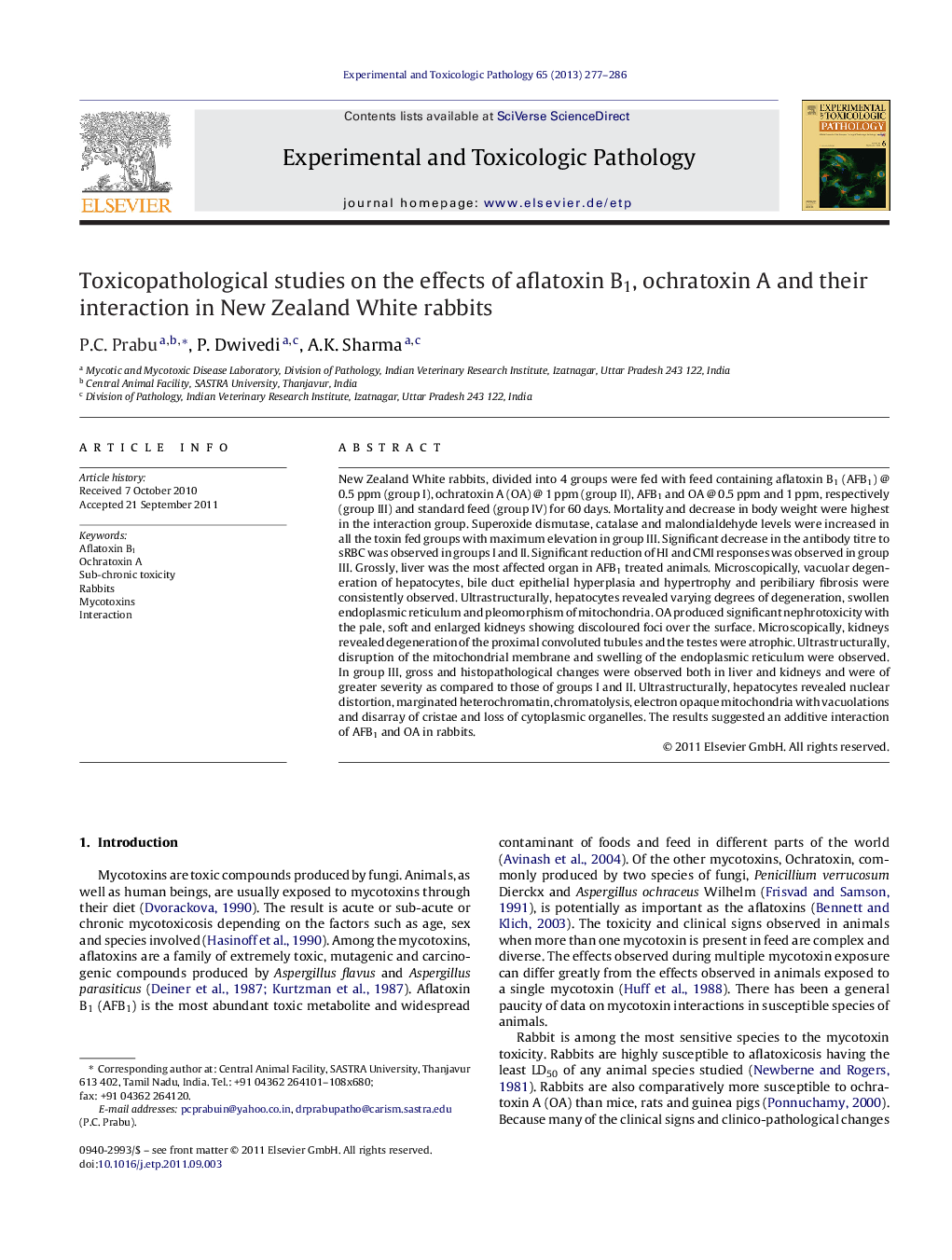| Article ID | Journal | Published Year | Pages | File Type |
|---|---|---|---|---|
| 2499219 | Experimental and Toxicologic Pathology | 2013 | 10 Pages |
New Zealand White rabbits, divided into 4 groups were fed with feed containing aflatoxin B1 (AFB1) @ 0.5 ppm (group I), ochratoxin A (OA) @ 1 ppm (group II), AFB1 and OA @ 0.5 ppm and 1 ppm, respectively (group III) and standard feed (group IV) for 60 days. Mortality and decrease in body weight were highest in the interaction group. Superoxide dismutase, catalase and malondialdehyde levels were increased in all the toxin fed groups with maximum elevation in group III. Significant decrease in the antibody titre to sRBC was observed in groups I and II. Significant reduction of HI and CMI responses was observed in group III. Grossly, liver was the most affected organ in AFB1 treated animals. Microscopically, vacuolar degeneration of hepatocytes, bile duct epithelial hyperplasia and hypertrophy and peribiliary fibrosis were consistently observed. Ultrastructurally, hepatocytes revealed varying degrees of degeneration, swollen endoplasmic reticulum and pleomorphism of mitochondria. OA produced significant nephrotoxicity with the pale, soft and enlarged kidneys showing discoloured foci over the surface. Microscopically, kidneys revealed degeneration of the proximal convoluted tubules and the testes were atrophic. Ultrastructurally, disruption of the mitochondrial membrane and swelling of the endoplasmic reticulum were observed. In group III, gross and histopathological changes were observed both in liver and kidneys and were of greater severity as compared to those of groups I and II. Ultrastructurally, hepatocytes revealed nuclear distortion, marginated heterochromatin, chromatolysis, electron opaque mitochondria with vacuolations and disarray of cristae and loss of cytoplasmic organelles. The results suggested an additive interaction of AFB1 and OA in rabbits.
